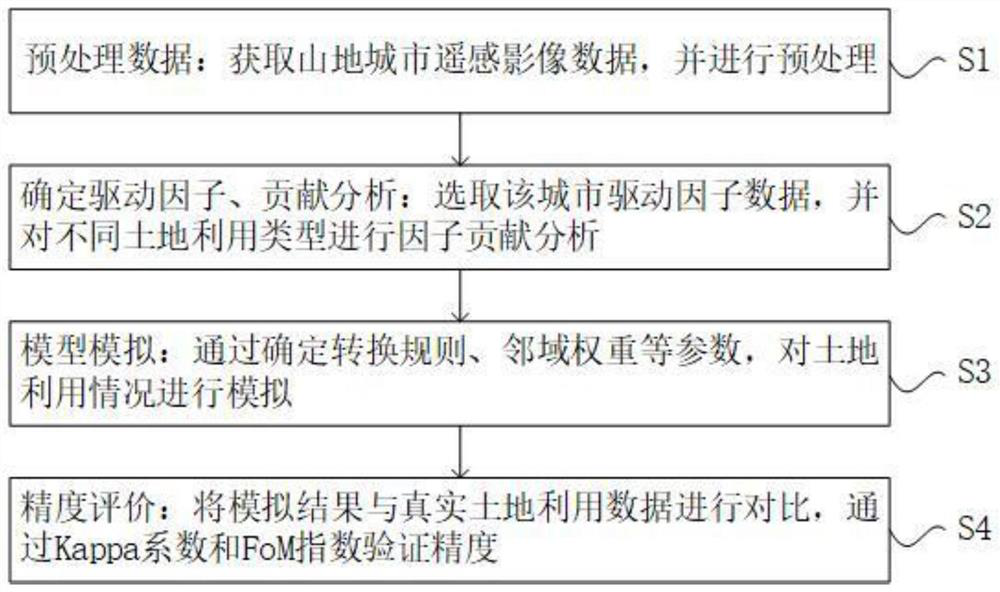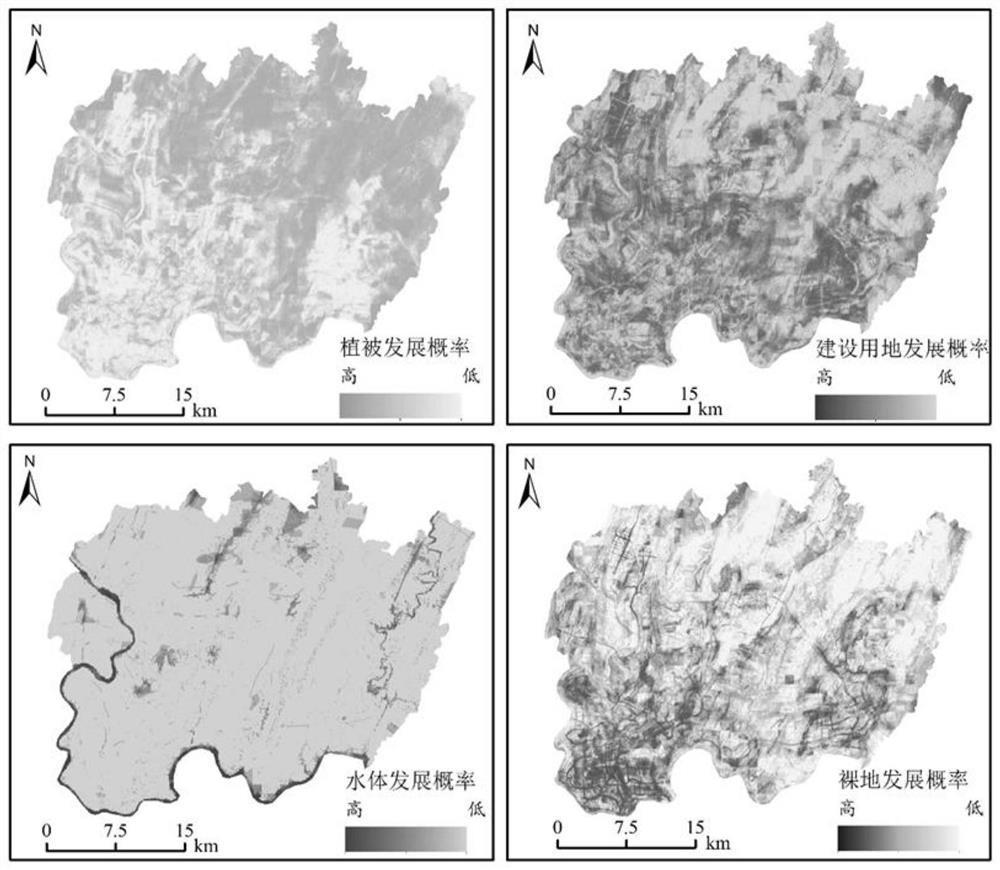Mountain city land utilization evolution simulation method
A simulation method and land technology, applied in the field of geographic information, can solve problems such as the influence of terrain, road network and other construction land layout, large slope, etc., to achieve the effect of improving simulation accuracy
- Summary
- Abstract
- Description
- Claims
- Application Information
AI Technical Summary
Problems solved by technology
Method used
Image
Examples
Embodiment 1
[0047] Such as Figure 1-2 As shown, the present invention provides a kind of technical scheme, a kind of simulation method of mountain city land use evolution, comprises following concrete steps:
[0048] S1. Preprocessing data: Obtain remote sensing image data of mountainous cities and perform preprocessing;
[0049] S2. Determine the driving factors and contribute to analysis: select different types of plots and driving factors in the city, and conduct contribution analysis;
[0050] S3. Model simulation: input parameters in the model, adjust parameters to simulate land use;
[0051] S4. Accuracy evaluation: compare the simulation results with real land use data, and calculate the simulation accuracy through Kappa coefficient and FoM index.
[0052] According to the above technical scheme, in S2, the contribution of each factor to the change of different land use types is analyzed, and the root mean square error and the out-of-bag root mean square error detection value un...
Embodiment 2
[0076] Taking Liangjiang New District of Chongqing as an example, the implementation steps are as follows:
[0077] Step 1: Preprocess the data
[0078] Obtain two phases of remote sensing images of Liangjiang New Area on the Google Earth Engine platform, combined with Google Earth high-definition images, classify the images through visual interpretation, and obtain the land use data of the start year and end year. The classification system is combined with the specific conditions of the local mountainous cities. : Construction land (mainly including urban industrial and mining land, urban residential land, traffic water use land), vegetation (mainly including trees, shrubs and various forest vegetation), bare land (mainly including unused land) and water body (mainly including rivers, lakes and reservoirs) ).
[0079] The basic driving factor data was obtained from the OpenStreetMap platform, the Resource and Environmental Science and Data Center of the Chinese Academy of Sc...
PUM
 Login to View More
Login to View More Abstract
Description
Claims
Application Information
 Login to View More
Login to View More - R&D
- Intellectual Property
- Life Sciences
- Materials
- Tech Scout
- Unparalleled Data Quality
- Higher Quality Content
- 60% Fewer Hallucinations
Browse by: Latest US Patents, China's latest patents, Technical Efficacy Thesaurus, Application Domain, Technology Topic, Popular Technical Reports.
© 2025 PatSnap. All rights reserved.Legal|Privacy policy|Modern Slavery Act Transparency Statement|Sitemap|About US| Contact US: help@patsnap.com



